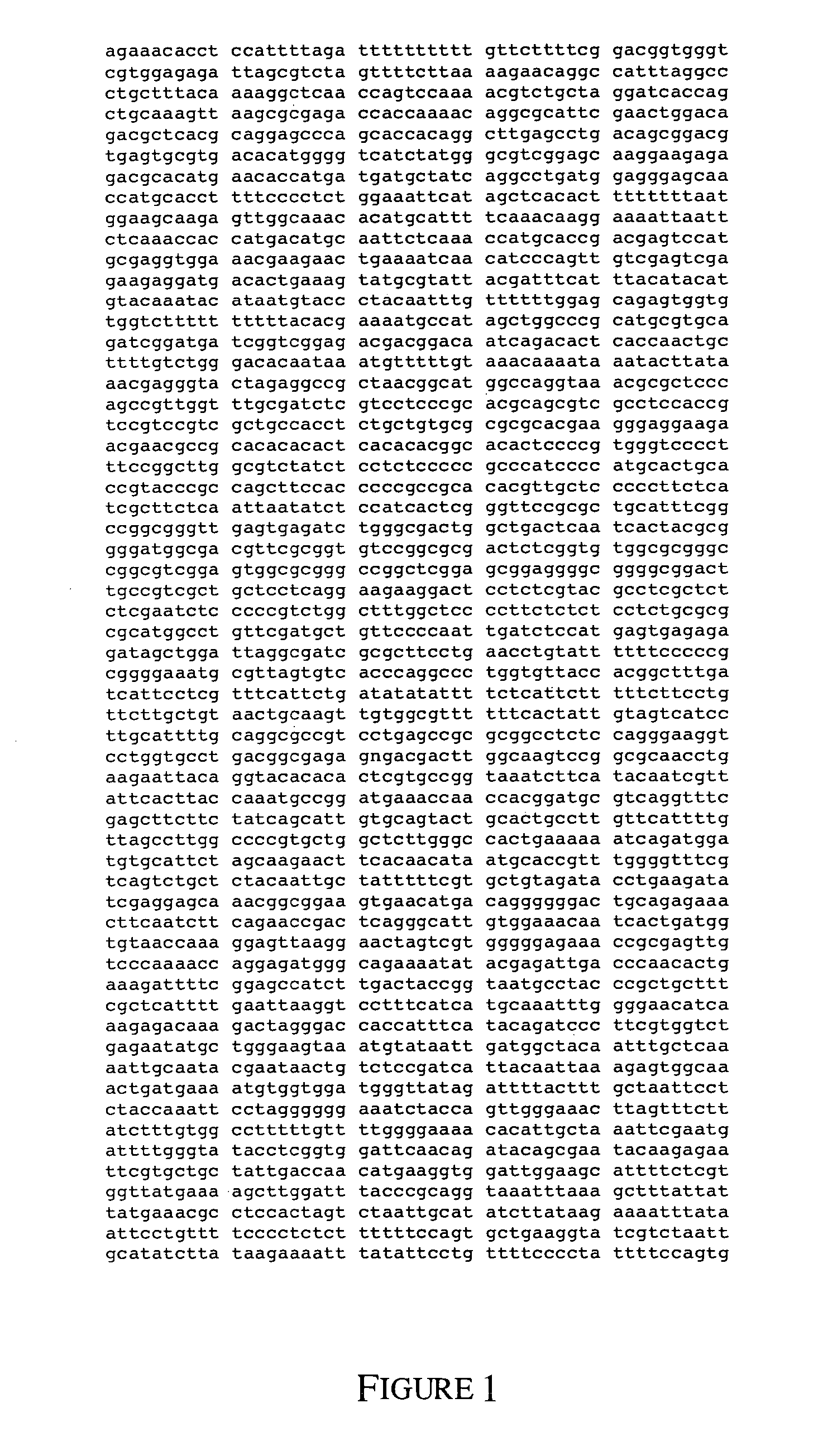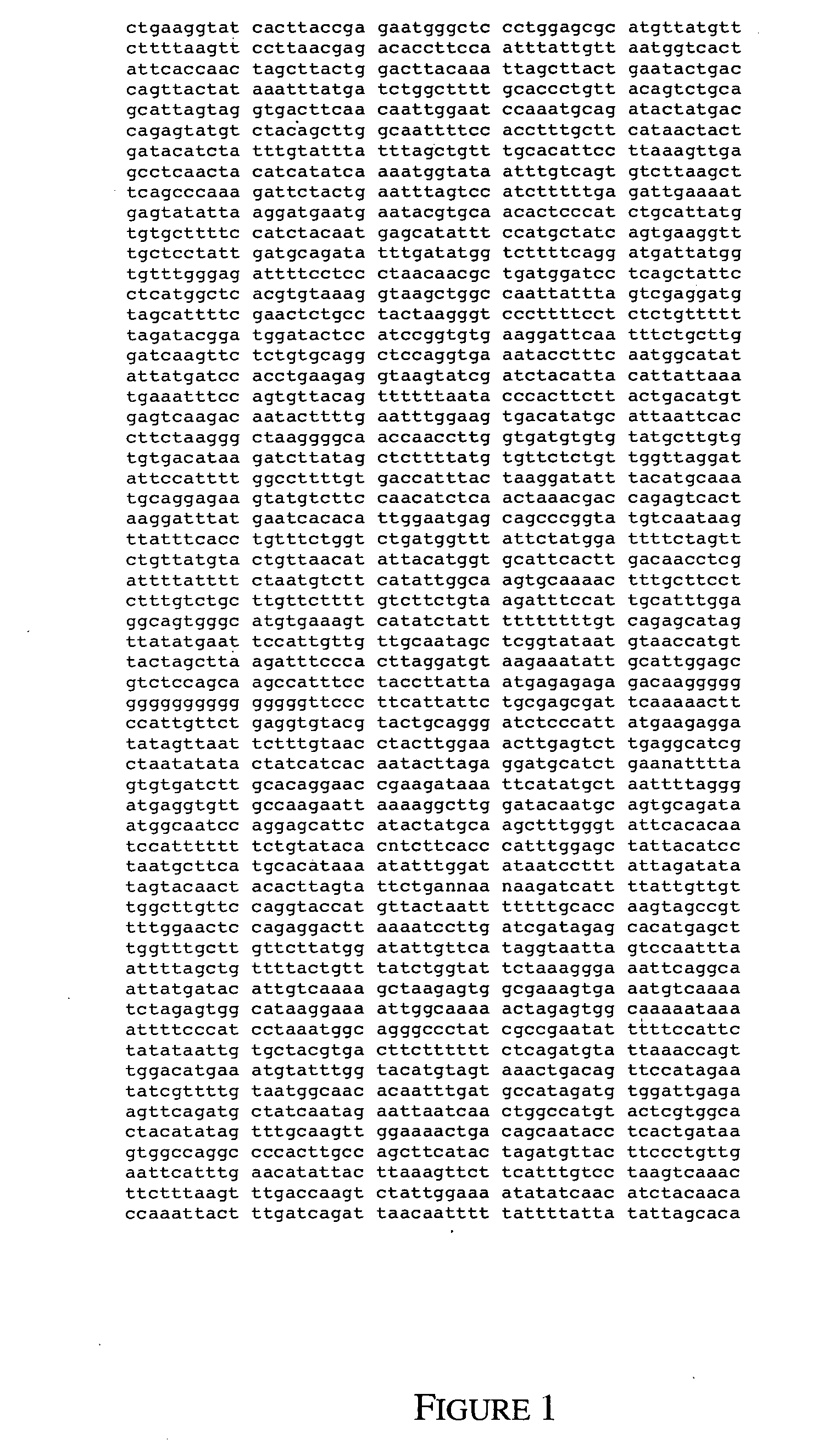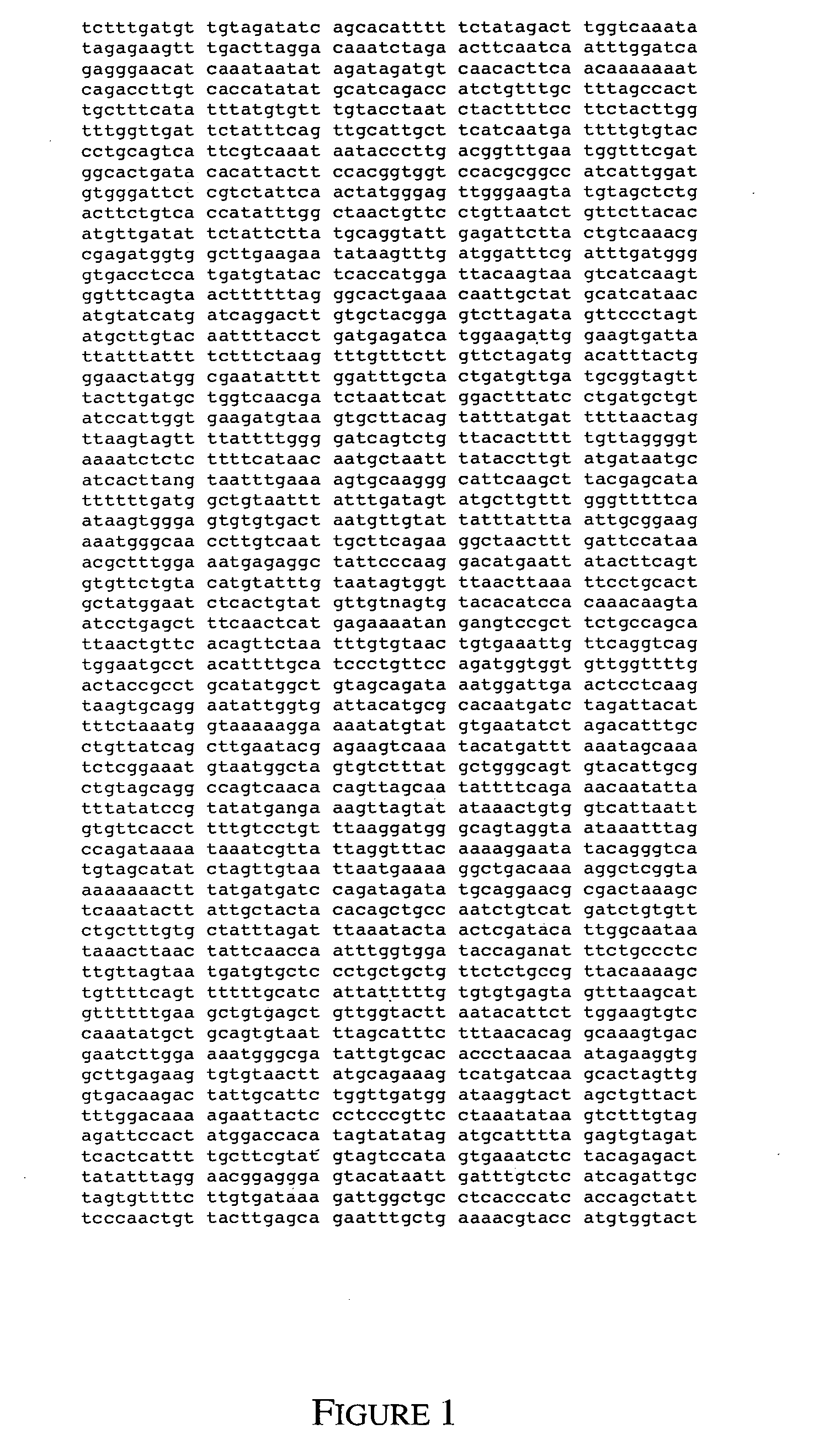Method and means for improving bowel health
a bowel and bowel health technology, applied in the field of mammals, can solve the problems of combining gene mutations in each of the three genomes, major morbidity and mortality, and serious non-infectious chronic illnesses relating to diet and lifestyle, and achieve the effects of reducing the rate of glucose load, slowing down glucose absorption, and reducing the amount of insulin
- Summary
- Abstract
- Description
- Claims
- Application Information
AI Technical Summary
Benefits of technology
Problems solved by technology
Method used
Image
Examples
example 1
Materials and Methods
Carbohydrate Determination and Analysis
[0191] Starch was isolated from wheat grain using the method of Schulman et al. (1991).
[0192] Starch content was determined using the total starch analysis kit supplied by Megazyme (Bray, Co Wicklow, Republic of Ireland).
[0193] The amylose content of starch samples was determined by the colorimetric (iodometric) method of Morrison and Laignelet (1983) with slight modifications as follows. Approximately 2 mg of starch was weighed accurately (to 0.1 mg) into a 2 ml screw-capped tube fitted with a rubber washer in the lid. To remove lipid, 1 ml of 85% (v / v) methanol was mixed with the starch and the tube heated in a 65° C. water bath for 1 hour with occasional vortexing. After centrifugation at 13,000 g for 5 min, the supernatant was carefully removed and the extraction steps repeated. The starch was then dried at 65° C. for 1 hour and dissolved in urea-dimethyl sulphoxide solution (UDMSO; 9 volumes of dimethyl sulphoxide...
example 2
Genetic Constructs for the Alteration of Wheat SBEIIa and SBEIIb Expression
[0198] Duplex-RNA (dsRNA) constructs were made to reduce the expression of either the SBEIIa or SBEIIb genes of wheat. In such constructs, the desired nucleic acid sequence corresponding to part of the SBEIIa or SBEIIb genes occurred in both the sense and antisense orientations relative to the promoter so that the expressed RNA comprised complementary regions that were able to basepair and form a duplex or double-stranded RNA. A spacer region between the sense and antisense sequences comprised an intron sequence which, when transcribed as part of the RNA in the transformed plant, would be spliced out to form a tight “hairpin” duplex structure. The inclusion of an intron has been found to increase the efficiency of gene silencing conferred by duplex-RNA constructs (Smith et al, 2000). The desired nucleic acid was linked to a high molecular weight glutenin (HMWG) promoter sequence (promoter of the Dx5 subunit ...
example 3
Transformation of Wheat
[0202] Genetic constructs for transformation of wheat were introduced by electroporation into the disarmed Agrobacterium tumefaciens strain LBA4404 carrying the vir plasmid pAL4404 and pSB1, with subsequent selection on media with spectinomycin. Transformed Agrobacterium strains were incubated on solidified YEP media at 27° C. for 2 days. Bacteria were then collected and re-suspended in TSIM1 (MS media with 100 mg / l myo-inositol, 10 g / l glucose, 50 mg / l MES buffer pH5.5) containing 400 mM acetosyringone to an optical density of 2.4 at 650 nm for wheat inoculation.
[0203] Wheat plants (variety NB1, a Spring wheat variety obtained from Nickerson Seeds Ltd, Rothwell, Lincs.) were grown in a glasshouse at 22 / 15° C. day / night temperature with supplemented light to give a 16 hour day. Tillers were harvested approximately 14 days post-anthesis (embryos approximately 1 mm in length) to include 50 cm tiller stem. All leaves were then removed from the tillers except th...
PUM
| Property | Measurement | Unit |
|---|---|---|
| temperature | aaaaa | aaaaa |
| w/w | aaaaa | aaaaa |
| temperatures | aaaaa | aaaaa |
Abstract
Description
Claims
Application Information
 Login to View More
Login to View More - R&D
- Intellectual Property
- Life Sciences
- Materials
- Tech Scout
- Unparalleled Data Quality
- Higher Quality Content
- 60% Fewer Hallucinations
Browse by: Latest US Patents, China's latest patents, Technical Efficacy Thesaurus, Application Domain, Technology Topic, Popular Technical Reports.
© 2025 PatSnap. All rights reserved.Legal|Privacy policy|Modern Slavery Act Transparency Statement|Sitemap|About US| Contact US: help@patsnap.com



